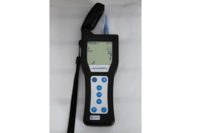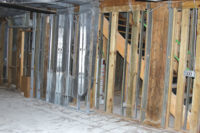It's About Documentation

Do you think your water mitigation business has it rough? Consider the insurance adjuster who must justify your bills. I know, industry training emphasizes the insured is your customer; however, the water mitigation industry started to prosper when insurance companies started providing coverage for water losses. Moreover, we want to get paid when we submit an invoice. Providing accurate documentation makes an adjuster’s job easier and you get paid faster.

Through a detailed understanding of the drying process, mitigation contractors apply knowledge to actual drying situations. Water mitigation has evolved in recent years, causing many contractors to turn to new ways of drying in order to stay successful. New technology to extract water from buildings, highly effective low-grain refrigerant dehumidifiers, heat drying systems and other innovations have been introduced. The Institute of Inspection, Cleaning and Restoration Certification has developed and approved three-day Water Damage Restoration Technician classes and approved Applied Structural Drying Schools. Many insurance professionals are educating themselves in the science of drying in order to gain a better understanding of the process behind drying, and they want documentation to justify paying your bills. They are looking for documentation of the job from you.
The mitigation industry can be friend or foe to the insurance carrier. It is a good friend when a water-damaged structure is dried quickly, preventing secondary damage, like mold, from increasing the overall damage. But mitigation companies get caught in the middle when secondary damage occurs and litigation ensues that can continue for years and result in costly legal bills and unnecessary payouts.
The trend picking up more and more speed in our industry is to thoroughly document the drying job. In a recent survey I conducted, documenting the process directly affects the successful completion of drying a building. It is not surprising, then, that after a building has been compromised by moisture, contractors and carriers turn to the “ANSI/ IICRC S500-2006 Standard and Reference Guide for Professional Water Damage Restoration” to dry the structure. Without first determining how much moisture is present in a structure, you can only guess when determining the amount of equipment you need because you don’t know how to balance the drying system. Knowing how much equipment to use and documenting the drying process will help you provide an accurate invoice to the insurance carrier. The biggest challenge you face may be providing accurate drying logs or third-party verification of successful drying. Increasingly, at conferences I attend and via e-mails I receive, insurance professionals and government officials want to know how they can obtain copies of ANSI/IICRC S500.

The S500 began its journey in 1992. We needed to find a better way of providing a more thorough drying service in order to elevate our industry. Dr. Michael Berry, then-deputy director of the EPA’s Indoor Environmental Criteria and Assessment office, urged the industry to find a more scientific approach. “Water is the single most long-term destructive substance to enter the built environment in an out-of-control state,” he said, and he asked us to write a standard.
The resulting document was created in two years, culminating in the first edition of S500 in 1994. The water-damage restoration industry had its first procedural standard in writing. The document recommended restorers evaluate water damage situations, monitor each loss, take moisture readings, and evaluate the drying process. The standard was designed to be a living document, and as improvements in the technology of water damage evolved, so did the standard. The second edition used the term “taken” (referring to moisture readings) 12 times and “documentation” 10 times; it emphasized “evaluating the loss” 41 times! When the IICRC S500 Third Edition was published and ANSI, assisting as an independent institute facilitating conformity assessments, was fully involved, the document grew from 116 to 357 pages. The S500 now contains 65 references to taking moisture readings, 102 references to evaluating losses, 144 references to document or documenting losses, and 29 references comparing moisture readings to dry standards.

The approval of IICRC S500 by ANSI was of great importance to the water mitigation industry. It elevated the standard of drying to a new level of professionalism. Independence and conformity assessment are key elements in the strength of the document. Today, documenting your losses is the standard of care. ANSI/IICRC S500 and independent review of drying conditions by third parties should keep our industry moving forward in a positive direction.
As changes in the industry and your market occur, so do the demands on you and your business. Assuming a building is dry without documentation is not sufficient to ensure you have accomplished your goals. Old habits die hard and are driven by our mindset. If you feel this is all too difficult, too time consuming, too expensive or otherwise out of your reach, you need to think again. Educate yourself and learn to write it down. It will have a lasting effect on your business and your performance. There is absolutely no substitute for a well-documented job.
Looking for a reprint of this article?
From high-res PDFs to custom plaques, order your copy today!





